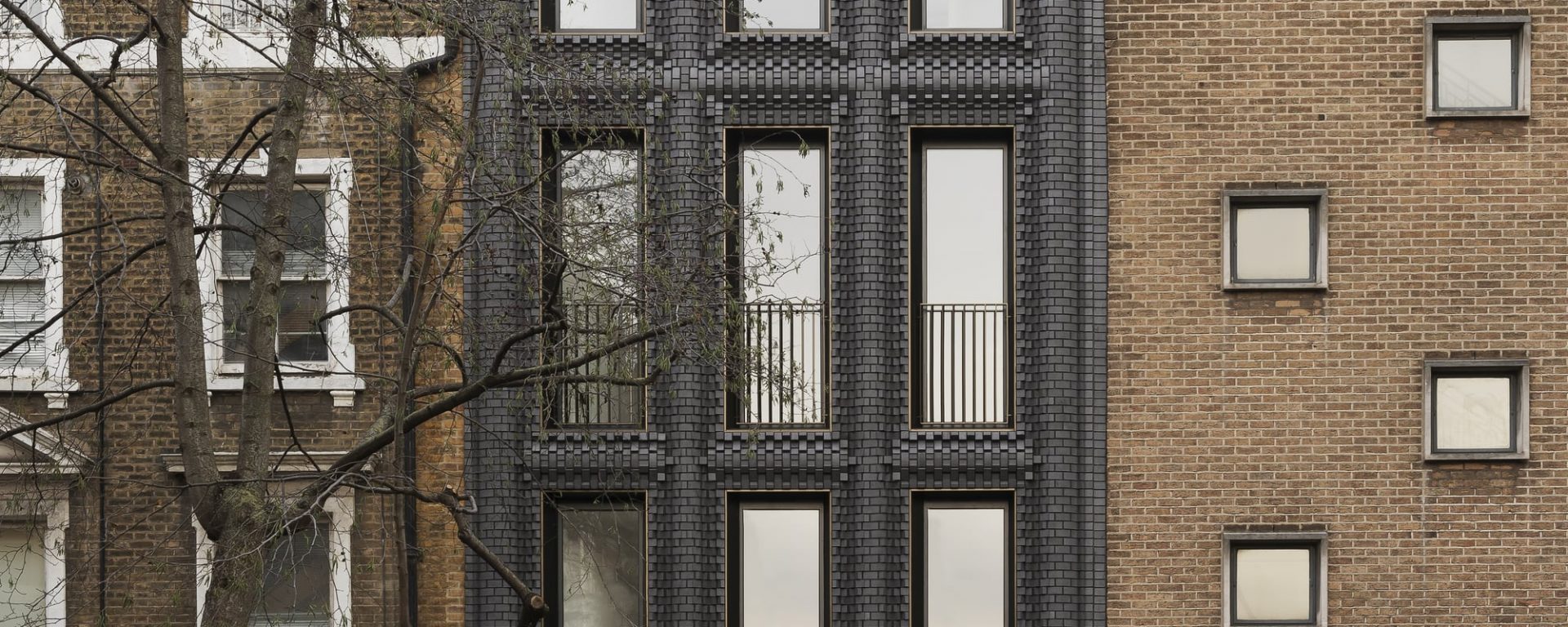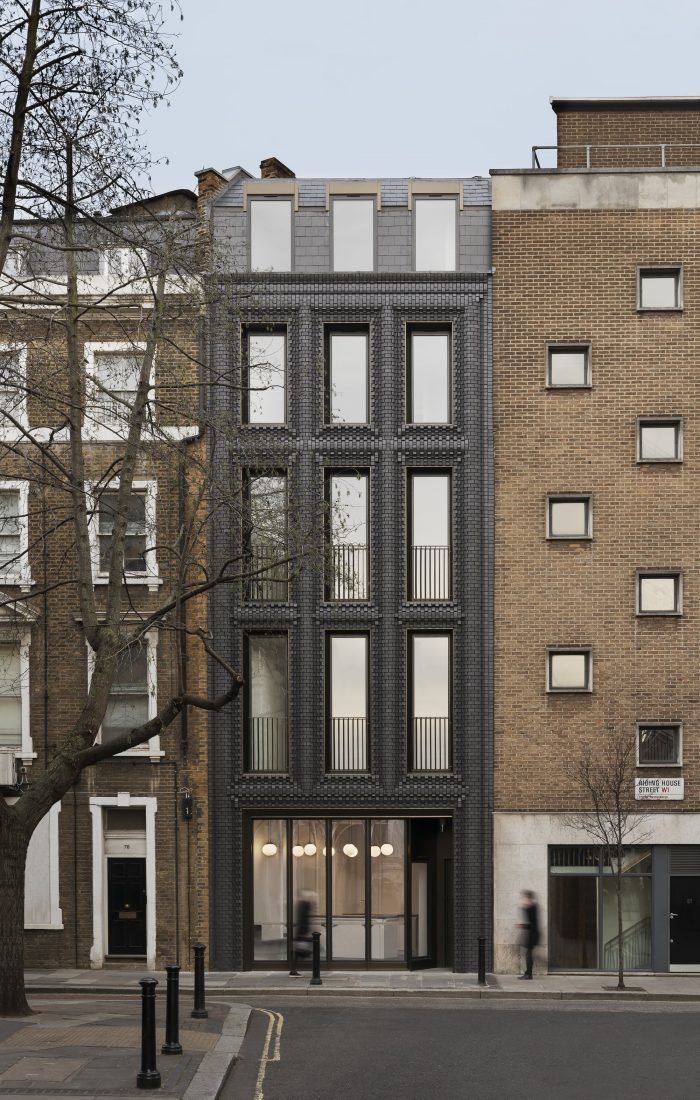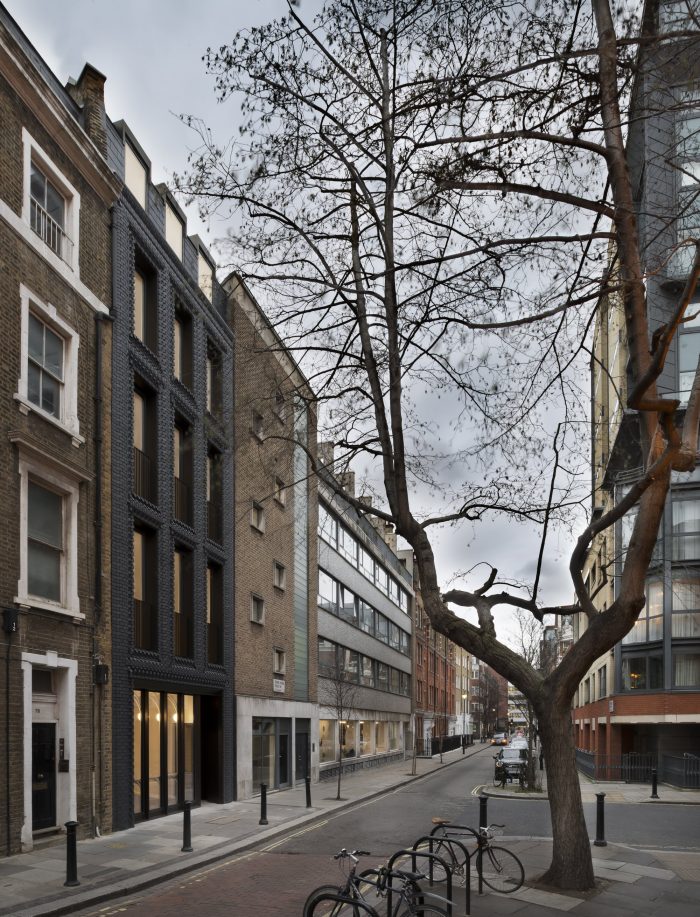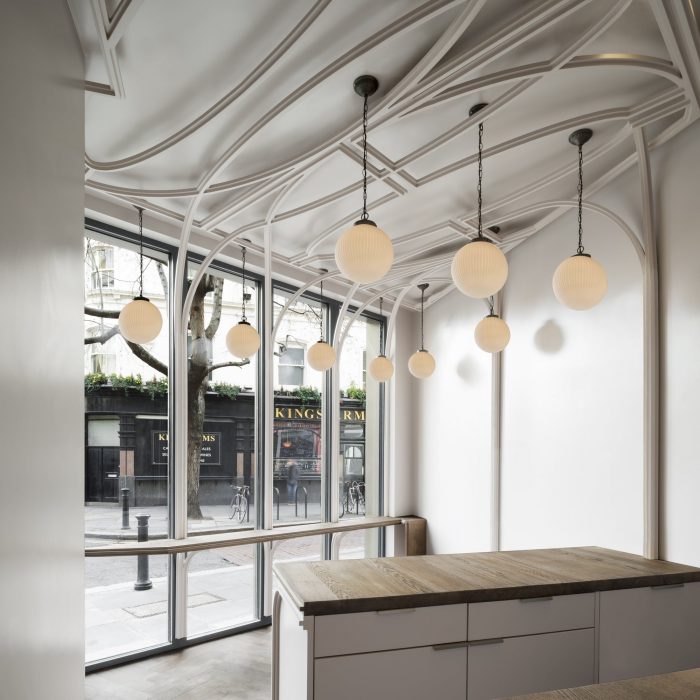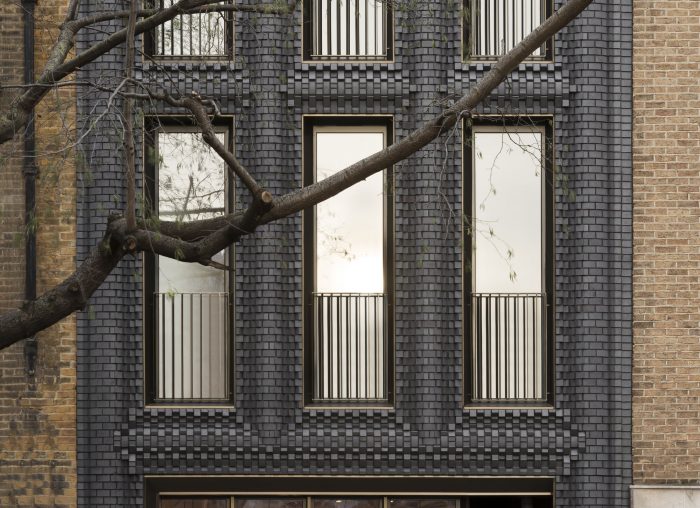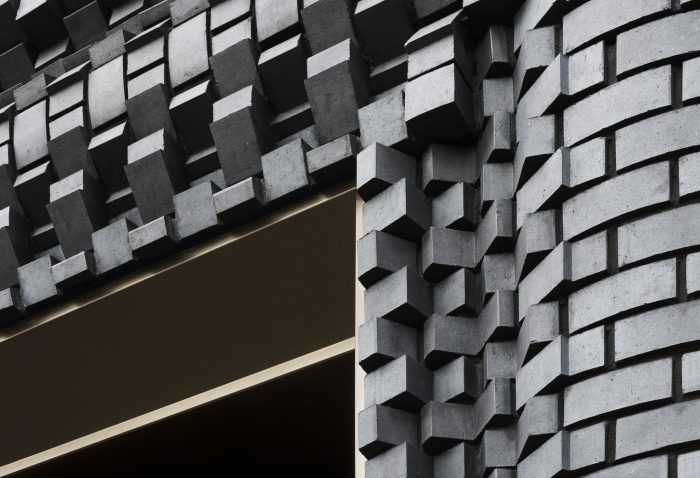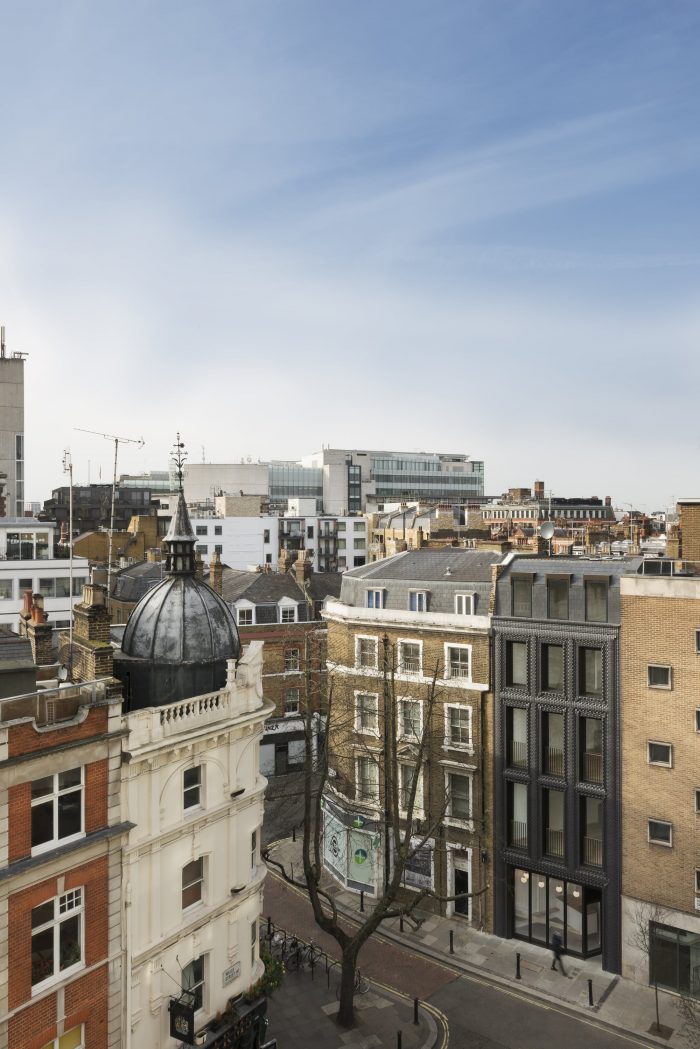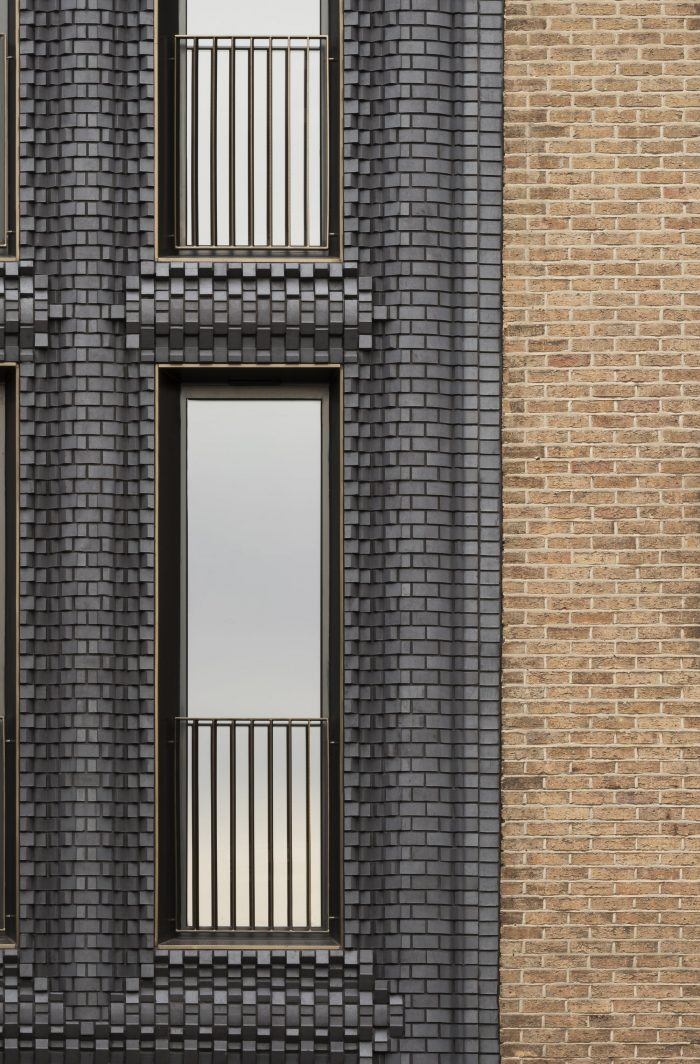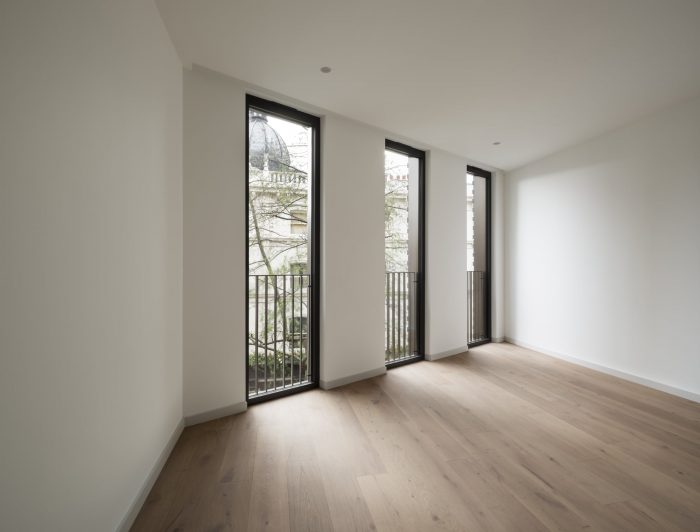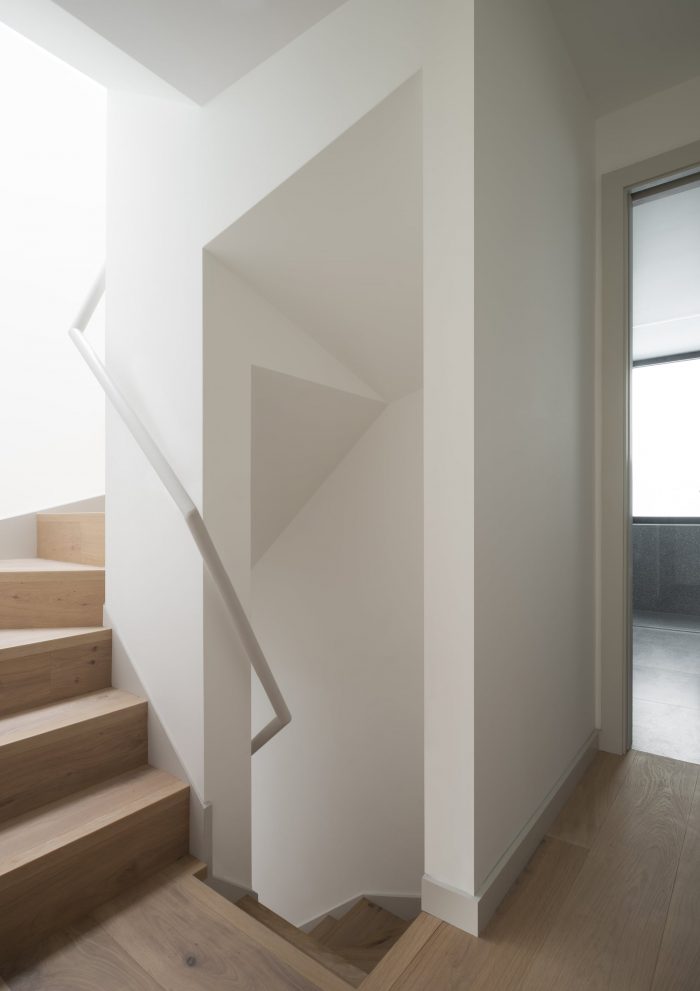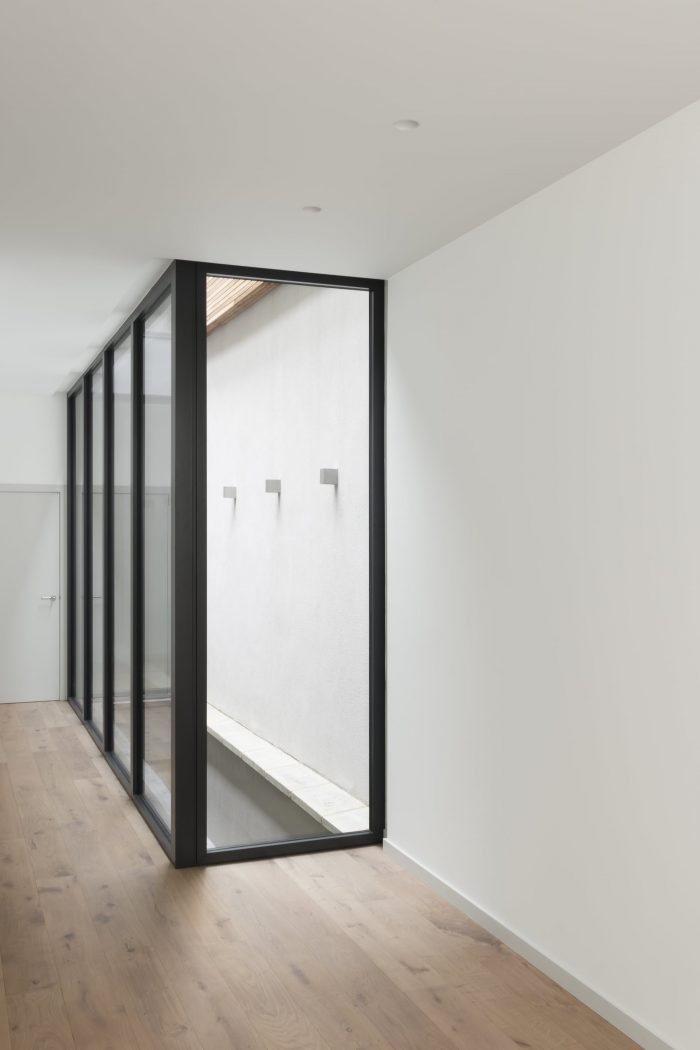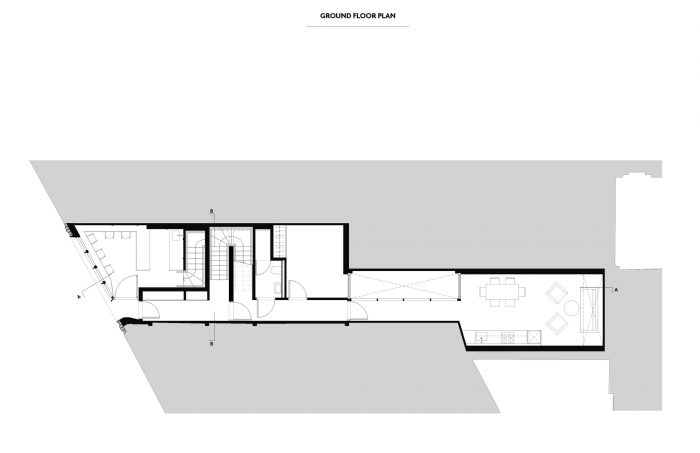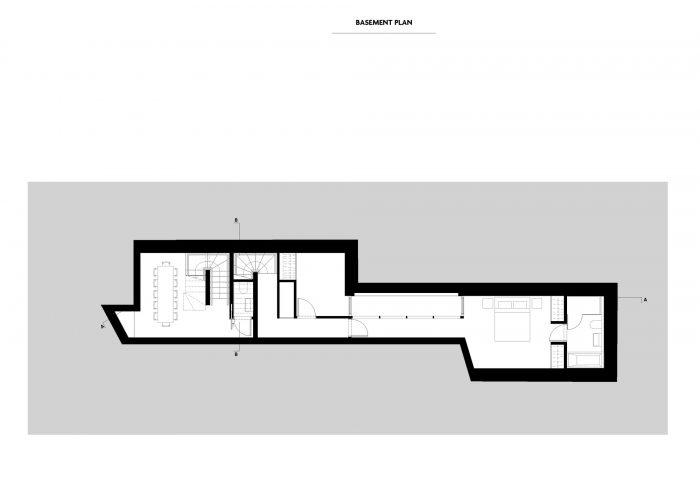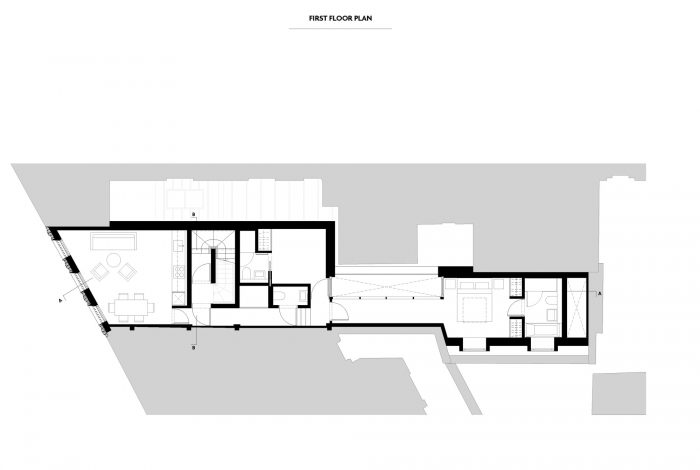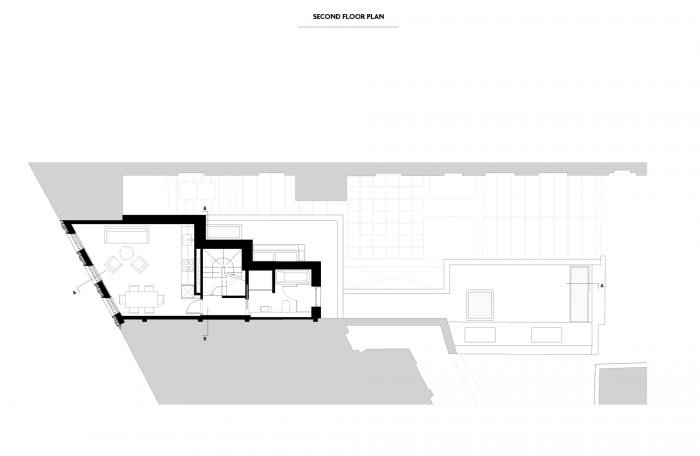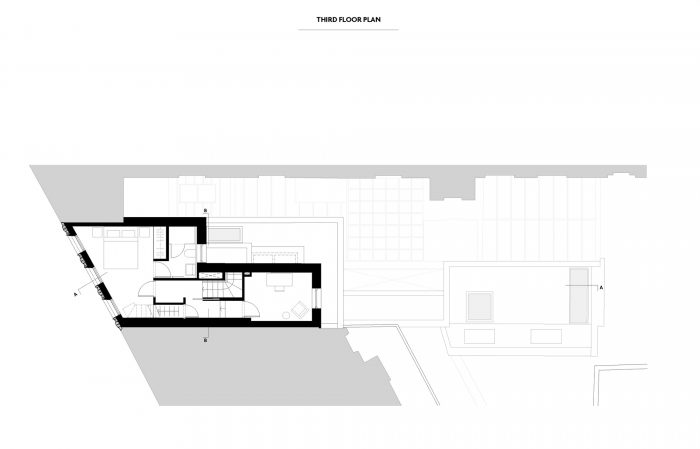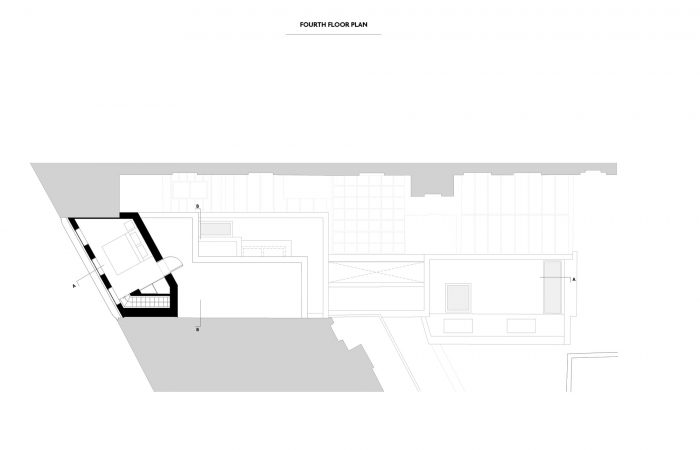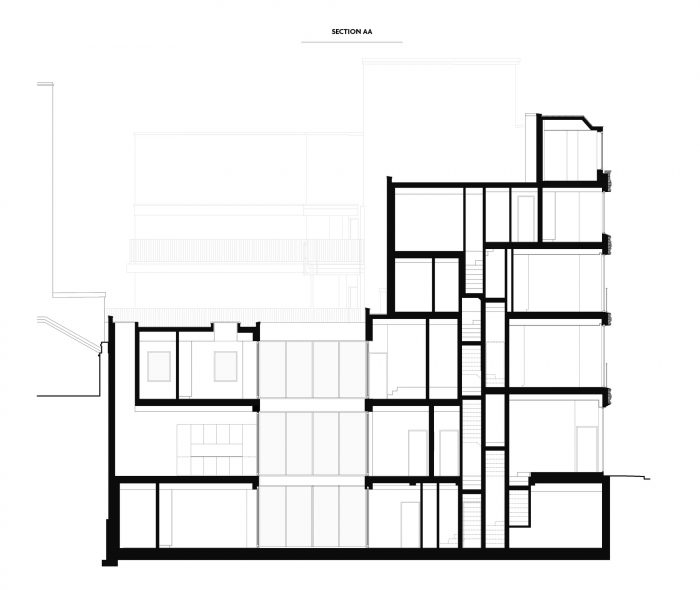Riding House街的建筑风格非常广泛。从最东边的约翰-纳什的万灵教堂开始,这条街从19世纪的梯田到战后的商业建筑,从混凝土板结构到20世纪的公寓楼,随意地跳过。这条街的零碎美学被砖块的使用所统一,砖块是首选的外墙材料,有时它是如此之多,以至于形成了道路表面。Interlock吸收了这段历史,并通过采用邻近的19世纪露台的比例,重塑其砖块立面来创造一个不确定的遗产建筑–一个同时具有历史性和现代性、熟悉而陌生的建筑。 放弃了伦敦砖的传统尺寸,开发了一组44个形状错乱、似乎无法堆叠的粘土块。
Riding House Street hosts an extraordinary breadth of architectural styles. From John Nash’s All Souls church at its most easterly point, the street skips haphazardly from 19th Century terraces to post war commercial buildings; concrete slab structures and 20th Century apartment blocks. The street’s piecemeal aesthetic is unified by the use of brickwork which serves as the façade material of choice, at times so abundant that it forms the road surface. The Interlock absorbs this history and responds by taking the proportions of the neighbouring 19th Century terrace, and recasting its brick façade to create a building of uncertain heritage – one that is simultaneously historic and contemporary, familiar yet foreign. Abandoning the traditional dimensions of London brick, a collection of 44 misshapen and seemingly un-stackable clay blocks were developed.
表面上可见的图案部分是由材料和结构之间的相互作用决定的。砖块似乎与玻璃重叠,在楼层之间膨胀和弯曲,并被嵌入框架中,以表示建筑的周边。对于路人来说,这些砖块看起来就像齿轮一样变形和扭曲。通过对外墙进行三维建模,每个切面都可以单独调整,以满足结构和制造的要求,而不会削弱表面形式的完整性。选择斯塔福郡蓝土作为与该地区现有砖块的对比。泥灰岩粘土被放入14个手工制作的钢模中,并在氧化中烧制,以创造出无光泽的蓝色表面。烧制后,这14块 “母体 “砖被分割成30块 “子体”。5,000块景观的建造历时三个月。制作团队使用了1:1的印刷模板,规定了每块砖的数量、类型和位置。当在现场整理时,这188个模板看起来就像一份建筑手稿,每块砖都有不同的铺设说明。在立面后面,有三个新的住宅单元和一个咖啡馆,下面是画廊。外立面的比例和门窗的规则性掩盖了建筑体积和体量的复杂性。
The patterns visible across the surface are informed, in part, by the interactions between materials and structure. The bricks appear to lap up against glazing, swell and bow between floors and are inset frame-like to denote the building’s perimeter. For passers-by, the bricks appear to morph and twist like cogs. By modelling the facade in 3D, each facet could be individually adjusted to meet structural and fabrication requirements without diluting the integrity of the surface form. Staffordshire Blue Clay was selected as a contrast to the areas existing brickwork. The marl clay was set into 14 hand-crafted steel molds and fired in oxidation to create the matt blue finish. After firing, these 14 ‘parent’ bricks were divided to form the 30 ‘offspring’. Construction of the 5,000 block landscape took place over three months. The fabrication team used 1:1 printed templates that set out the number, typology and location of each brick. When collated on site, these 188 templates appeared like a construction manuscript, with each brick a different note to lay. Behind the façade, sit three new residential units and a café at street level with gallery beneath. The regularity of the façade’s proportion and fenestration belies the complexity of the building’s volume and massing.
在后部,建筑被设置为一系列不同形式和大小的堆积箱。每一层都比上一层浅,最深的楼层在底部,最小的在顶部。在这种阶梯式的形式中,有一系列深的采光井和天窗,将日光引入建筑的中心和边缘,在最低层创造出内部天井,在其他楼层创造出采光井。 面向街道的房间可以看到繁忙的街道,在较高的楼层可以看到附近建筑的屋顶和穹顶。在后面,光线更加分散,为私人空间创造了平静。在内部,这些单元采用了简单的元素色调–水磨石浴室、天然石材台面、喷漆木质厨房和橡木地板。位于建筑底部的光线充足的咖啡馆为外墙的厚重和墨色提供了一个对立面。 每一个表面都被洗成白色,厚重的窗棂被切成两半,从框架中挤出,形成带状,在天花板上弯曲和折叠,让人联想到装饰性的石膏制品。只有地板和台面上的橡木切面打破了这种单色的色调。 咖啡馆下面的楼层是一个专门建造的画廊空间,举办展览、研讨会和讲座。该项目代表了开发商和建筑师之间的共同愿景,即利用伦敦的建筑,以一种为街景带来新的东西的方式重新处理它。
At the rear, the building is set out as a series of stacked boxes of varying form and size. Each floor is shallower than the last with the deepest floorplan at the bottom and the smallest at the top. Within this stepped form sits a series of deep light wells and skylights that track daylight in to the centre and edges of the building, creating internal patios on the lowest floors and light wells on others. Facing the street, the rooms overlook the busy street and on higher floors, the rooftops and domes of nearby buildings. At the rear the light is more diffused creating calm in the private spaces. Inside, the units are finished in a simple elemental palette – terrazzo bathrooms, natural stone worktops, sprayed-timber kitchens and oak floors. The light-filled café at the base of the building offers a counterpoint to the weight and inkiness of the façade. With every surface washed in white, the heavy-set mullions are halved and extruded from their frames to form ribbons that curve and fold over the ceiling in a style reminiscent of ornamental plasterwork. The monochromatic palette is broken only by cuts of oak that line the floor and counter tops. The floor below the café is a purpose-built gallery space hosting exhibitions, workshops and talks. The project represents a shared vision between developer and architect to taking London’s architecture and re-approaching it in a way that brings something new to the streetscape.
Architects: Bureau de Change Architects
Area : 300 m²
Year : 2018
Photographs :Gilbert McCarragher
Manufacturers : Fortera, Inopera, Istoria, Vale Roofing
Engineering : HRW
Clients : HGG
Country : United Kingdom

